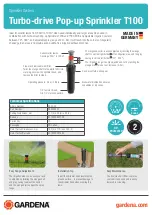
750 XTR Series
System Features
28
System manual | Version: 2.0.0
3.2.3 Field Supply
Sensors and actuators can be connected directly to the corresponding channel of the I/O
modules using 1- to 4-wire connection technology. The I/O module handles the power
supply for the sensors and actuators. The input and output drivers of individual I/O mod-
ules require a field-side power supply.
The field-side power supply is fed in at the head station (24 VDC). This case involves a
passive power supply without protection.
For supplying different field potentials (e.g., 24 VDC, 0 ... 230 VAC/DC), power supply
modules are available, with or without diagnostic capabilities. The power supply modules
can also be used to set up various potential groups. The connections are connected to a
power jumper contact in pairs.
Figure 14: Field Supply Input (Example)
Observe the following requirements for the field supply:
• Always use separate sources for the system and field power supply to reduce the likeli-
hood of failure and make it fault diagnosis easier.
• Use voltage sources with safety extra-low voltage (SELV, PELV) for all voltages with a
nominal value of 24 VDC.
• Be sure to include an overcurrent protection device to ensure that the maximum per-
missible current values are not exceeded.
• Some I/O modules do not have any power jumper contacts or only have individual
power jumper contacts. As a result, the transfer of the corresponding potential is inter-
rupted. If downstream I/O modules require a field power supply via the power jumper
contacts, you must use a power supply module. Observe the data sheets of the individ-
ual I/O modules.
The current load on the power contacts must not permanently exceed 10 A
















































